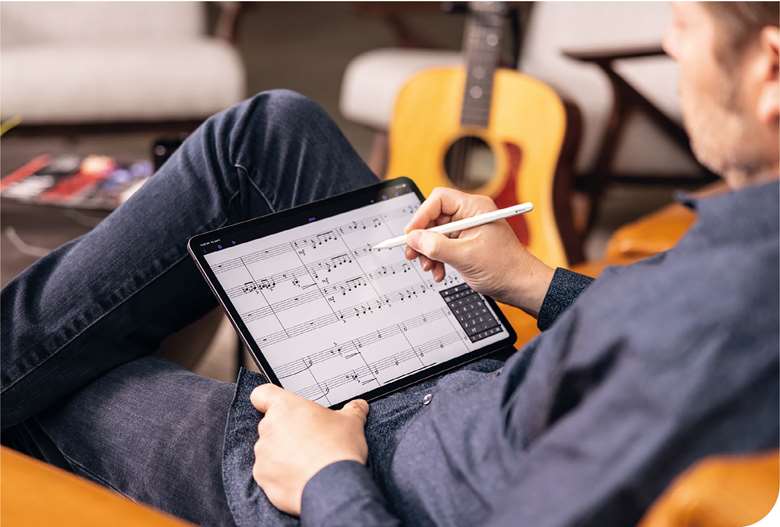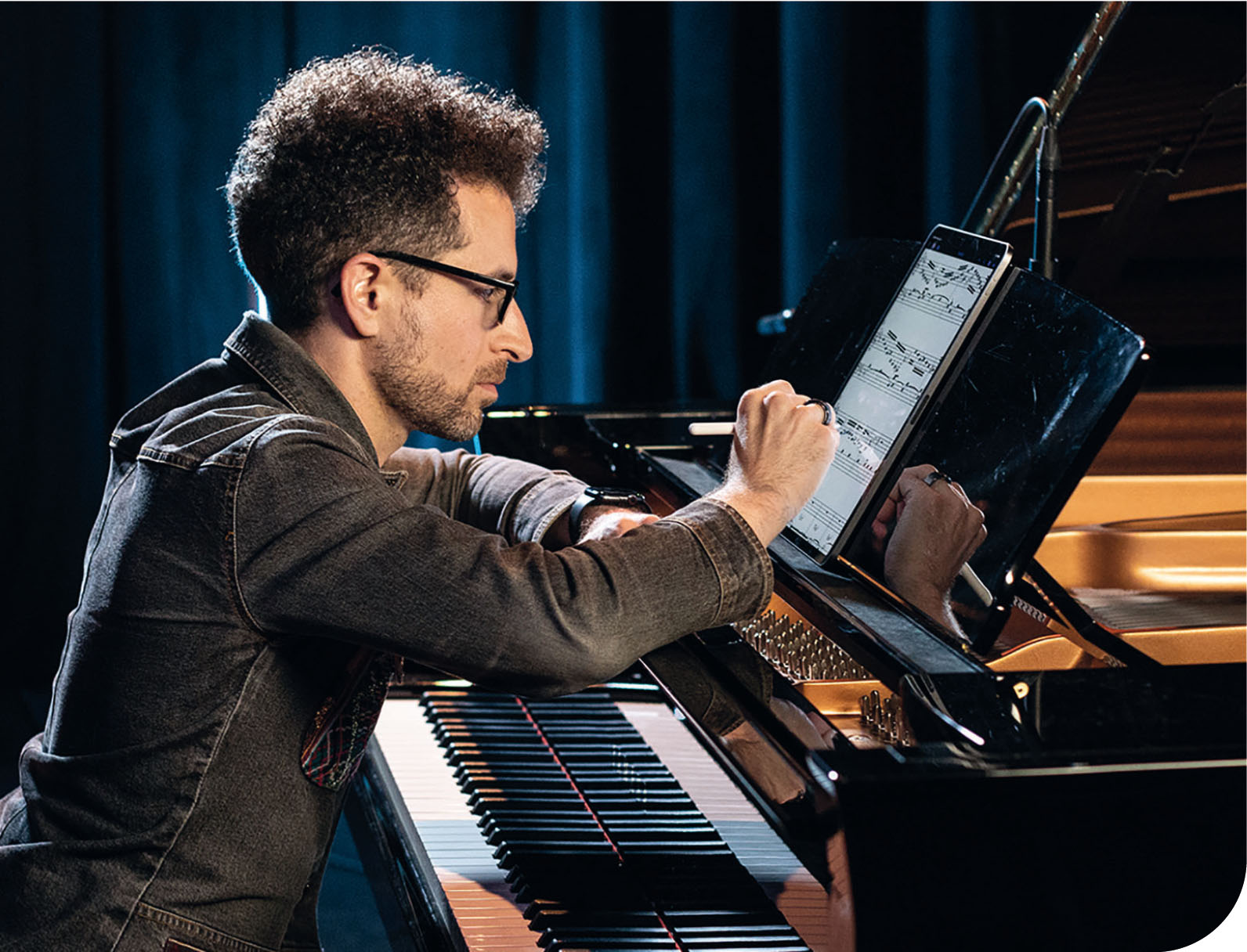Tech Reviews: Sibelius for iPad
Tim Hallas
Wednesday, December 1, 2021
Tim Hallas reviews Sibelius for iPad from Avid.

Unless you have somehow managed to avoid music notation software your entire professional life, you will have heard of Sibelius – the ubiquitous notation platform has been around for a very long time. Initially on Acorn (yes, sadly I am old enough to remember this) and then released on PC and Mac.
However, there has been one noticeable absence in the platform offering for quite some time. Sibelius could not run via a tablet computer and make use of the unique interface that these provide – until now. It must be said that Avid (the company that develops Sibelius) is slightly late to the party with this. Dorico for iPad has been around for a while and Notion released a tablet version of their software years ago – but Sibelius has finally caught up.
Setup
If you use Sibelius either at home or in your educational establishment, you can download the app straight to your iPad and sign in using the same account. Therefore, whichever version of the software you use, from the free version of Sibelius First through to Sibelius Ultimate, you gain the same equivalent level of features on the iPad version. The app itself can be downloaded from the App Store, and once installed, Sibelius asks you to sign in using your Avid account (or set one up). After you log in, it is ready to go.
Operation
If you have ever used Sibelius, the interface will look reassuringly familiar – the new document panel offers the usual set of templates including common ensembles and simple pages of a single-staff of notation. I began with a page of treble clef bars and explored how the system operates.
The usual keypad is available bottom-right and is still where you go to select note durations, accidentals and basic articulation. However, the big change between desktop and tablet is the way in which one interacts with the score itself. In the desktop version of the software, the user has to click on the stave with the mouse – but due to the touchscreen on the iPad, users can now just press on the screen on the relevant part of the stave.
The ability to use the iPad gestures for navigation around the document (to set appropriate levels of zoom and so on) is significantly faster than it has been in previous versions of the desktop app.
Unique interface
The ability to navigate the screen by selecting the location with your finger is a welcome addition, but it doesn't really save any time because notes would still have to be typed in with a keyboard. However, one additional tool that the iPad version provides is the ability to use the Apple Pencil to enter notation. This speeds things up significantly because it has a much finer point than even those with the slenderest of fingers. The Apple Pencil then offers additional functionality depending on how the stylus is angled on the screen.

Sibelius for iPad takes advantage of the Apple Pencil
Once a note has been entered using the Apple Pencil, by angling the note up and down it changes the pitch of note via accidentals. By moving the pencil tip up, the note gains sharps, and by moving the note down again, it reverts back through neutral and then adds flats. This is a particularly simple way to add accidentals and makes it slightly easier not to forget to turn them on and off if they last longer than a single note (I've done this far too many times).
By moving the stylus horizontally, the note duration can be altered, and you can easily add dotted values or alter the length quickly if you've accidentally forgotten to change it on the keypad before you began note entry. Although it sounds complicated that different things happen to notes depending on angle and pressure applied to the screen, in reality it isn't. It's actually quite intuitive and note entry happens very rapidly once the system has been learnt.
Other musical elements
Adding other musical elements such as clef changes, key changes, and expression markings is done by clicking on the plus (+) button at the top of the screen. These are then found under several sub-menus for different types of function and organised sensibly by groups of function.
All key score changes such as clef and key signature are grouped together, things that could be described as ‘lines' such as octaves, trills and slurs are in a separate group, and score navigation such as D.S. and Coda marks are grouped together. This sensible organisation mirrors the desktop version and makes navigation on the tablet version quite straightforward.
The method of adding these to score depends on the musical element being added. The simplest way is to select the object you want the musical element to be linked to and choosing it from the drop-down menu. This is the same method as the desktop app but not quite as seamless. For instance, adding a dynamic marking in the desktop version has a keyboard shortcut for writing them in by hand – however in the iPad version they must be selected separately once an expression marking has been added.
Summary
Sibelius for iPad is a great addition to the line. It makes basic operation and editing on the tablet very easy. However, I don't think it is a complete replacement for the desktop app yet, because no matter how clever the creators have been, it's just not quite as powerful as the desktop version. But the app definitely has a place. For quick edits to score while out and about in a school practice room, or for creating a quick worksheet or score for students to use in a free period, its more than powerful enough and, with an Apple Pencil, blisteringly fast.
What is great about the iPad app is that it is included with whichever subscription model you already have. So, if you have Sibelius on your PC or Mac then you can download the app and have that functionality on your iPad at no extra cost. This means that the app provides extra functionality without losing it elsewhere. It's not an ‘either/or’, it's an ‘and’.
Therefore, Sibelius for iPad is an excellent addition to the music classroom. As well as the functionality it provides music teachers, if your school has shared student iPads, pupils can take them off to practice rooms and work on their compositions with real instruments rather than being tied to computer workstations. It's an excellent addition to the Sibelius family.
Price: Sibelius First – free; Sibelius & Sibelius Ultimate – contact your reseller www.avid.com/sibelius
Note: After this review was written, Avid announced the release of Sibelius for iPhone. This allows users to access and edit their scores on-the-go. See New Products for details.

